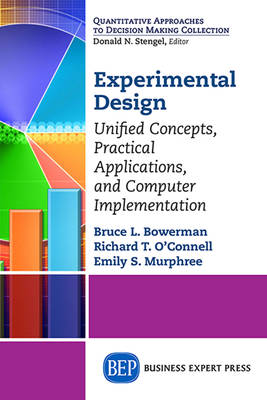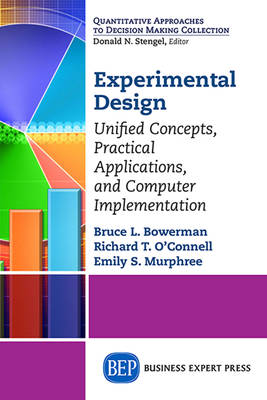
- Afhalen na 1 uur in een winkel met voorraad
- Gratis thuislevering in België vanaf € 30
- Ruim aanbod met 7 miljoen producten
- Afhalen na 1 uur in een winkel met voorraad
- Gratis thuislevering in België vanaf € 30
- Ruim aanbod met 7 miljoen producten
Zoeken
Experimental Design
Unified Concepts, Practical Applications, and Computer Implementation
Bruce L Bowerman, Richard T O'Connell
Paperback | Engels
€ 24,95
+ 49 punten
Omschrijving
This book is a concise and innovative book that gives a complete presentation of the design and analysis of experiments in approximately one half the space of competing books. With only the modest prerequisite of a basic (non-calculus) statistics course, this text is appropriate for the widest possible audience. Two procedures are generally used to analyze experimental design data-analysis of variance (ANOVA) and regression analysis. Because ANOVA is more intuitive, this book devotes most of its first three chapters to showing how to use ANOVA to analyze balanced (equal sample size) experimental design data. The text first discusses regression analysis at the end of Chapter 2, where regression is used to analyze data that cannot be analyzed by ANOVA: unbalanced (unequal sample size) data from two-way factorials and data from incomplete block designs. Regression is then used again in Chapter 4 to analyze data resulting from two-level fractional factorial and block confounding experiments.
Specificaties
Betrokkenen
- Auteur(s):
- Uitgeverij:
Inhoud
- Aantal bladzijden:
- 272
- Taal:
- Engels
Eigenschappen
- Productcode (EAN):
- 9781606499580
- Verschijningsdatum:
- 1/11/2014
- Uitvoering:
- Paperback
- Formaat:
- Trade paperback (VS)
- Afmetingen:
- 152 mm x 229 mm
- Gewicht:
- 367 g

Alleen bij Standaard Boekhandel
+ 49 punten op je klantenkaart van Standaard Boekhandel
Beoordelingen
We publiceren alleen reviews die voldoen aan de voorwaarden voor reviews. Bekijk onze voorwaarden voor reviews.











